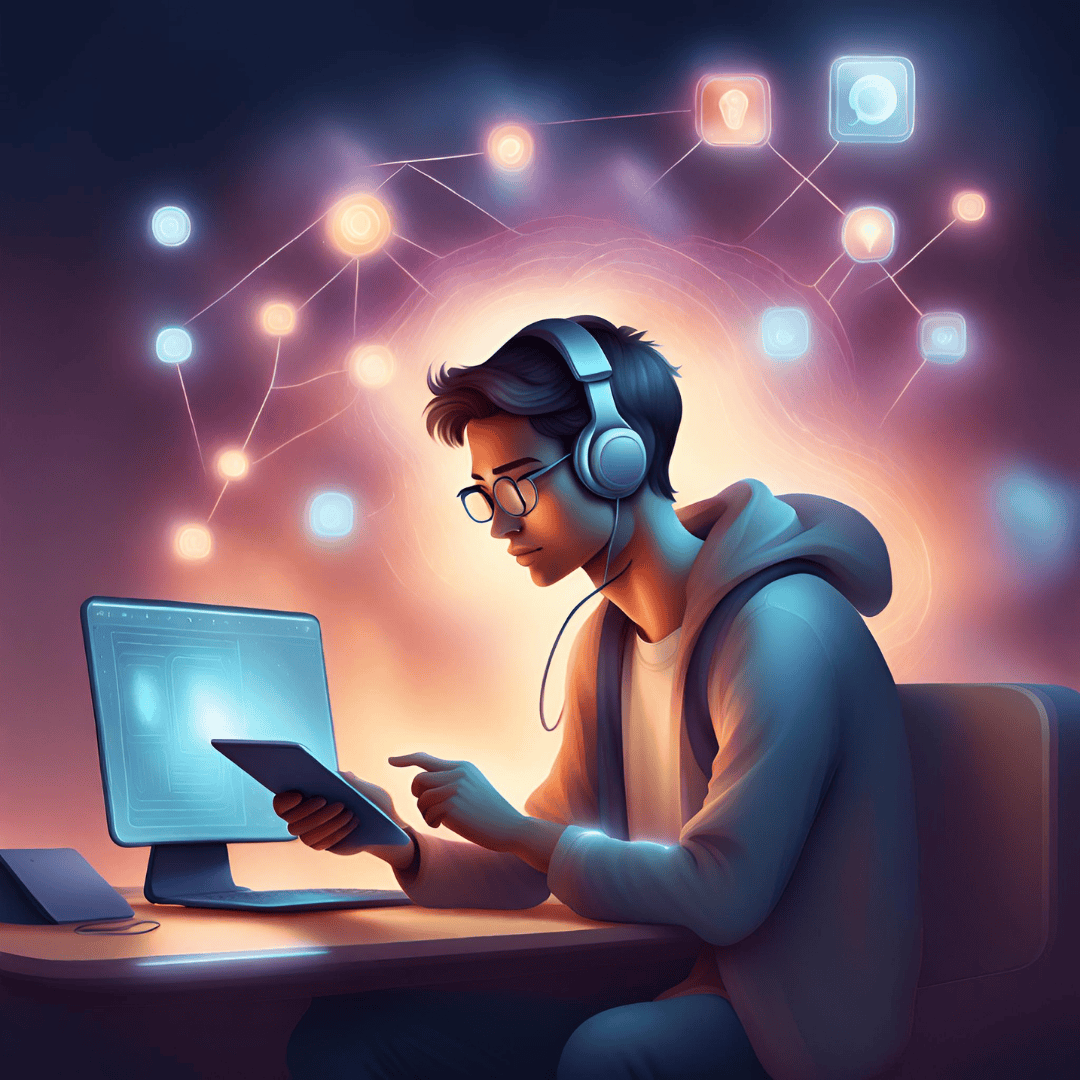The 7 Essential Skills to Enhance Digital Literacy for Parents

Parents play a crucial role in guiding their children through the ever evolving world of today’s internet. How can we as parents be sure we are up to the task of guiding our children? This article will help you explore the essential skills that can help you become more digitally literate, ensuring you can protect and guide your children effectively in the online space.
What is Digital Literacy for Parents?
Digital literacy encompasses more than just being able to use a computer or smartphone. For parents, digital literacy involves understanding today’s online world well enough to protect their children and teach them how to navigate it safely. This means being aware of the potential risks your child might encounter, recognizing the early signs of trouble, and knowing how to source the reliable information your child needs. In today’s world where the internet is a huge part of daily life, digital literacy for parents is essential to know and understand.

Basic Skills That Improve Digital Literacy
Let’s break down some of the key skills every parent should start to develop to enhance their own digital literacy.
1. Critical Thinking
Critical thinking is the ability to analyze all the information presented and make the appropriate informed decisions for the situation at hand. For parents, this can mean evaluating the online content your child is viewing to determine what is a trustworthy source. Lately there is so much misinformation available at every turn and critical thinking is essential to discern information. We need the teach our children to spot a bot that is spreading misinformation vs a real life person. Often times have a very little profile information or use the same phrases over and over.
2. Cybersecurity Awareness
Understanding cybersecurity is crucial to understand how to keep your child safe. Parents need to know how to protect their personal information and their children’s data to keep predators away from their family. This involves recognizing phishing scams when you see them, using strong passwords and also different passwords for all of your accounts, and teaching your kids about the importance of safe online browsing.
3. Privacy Management
In today’s digital era, all of your online data is constantly being collected by data farms, managing your privacy is vital for safety. Websites today have a privacy settings pop-up when you visit a new site. Never click the accept all button or your information can land in some shady sites, you can choose what information is given but editing the permissions. Parents should know how to adjust all of the privacy settings on their family’s social media accounts and other online platforms that they use, ensuring their family’s data is kept safe and secure from people with ill intent.
4. Media Literacy
Media literacy is the ability to critically evaluate and discern all of the media that we consume and encounter on a daily basis. For parents, this can mean teaching your children how to recognize someone’s bias, differentiate the fake news from the more reliable sources, and to understand the huge influence of advertising in today’s society. Media literacy skills are a cornerstone of digital literacy in your child’s online education.
5. Digital Parenting
Digital parenting involves you setting firm and clear boundaries for your child’s daily screen time, take the necessary steps to monitor their online activities, and talking about the potential risks that can come for anyone using the internet today. Being a digital parent will require you to be actively involved in your child’s online life, ensuring they have healthy boundaries with the technology that they consume on a daily basis.
6. Communication Skills
Good communication between parents and their children is key to digital literacy. Parents need to have open and honest conversations with their children about what they’re doing and encountering online. This open communication helps to build trust and allows parents to guide their children effectively with issues that might arise. We want our children to come to us with problems they see or if they maybe hear about a strange encounter from their peers. Open dialogue is important for online and offline situations and we cannot bury our heads in the sand when issues come about.
7. Adaptability
The digital world is constantly evolving and changing. You think you have it all covered and then something new appears that you ha e to learn quickly. Parents need to be adaptable, willing to learn about the new technologies that come out, and also stay up to date on the latest trends to effectively guide their children. Sometimes trends are dangerous and parents hear about them too late. Staying in top of the news regarding kids and technology is important.
What are the Examples of Digital Literacy?
Digital literacy can encompass a wide range of technology skills, from basic computer use and knowledge to understanding how online privacy can affect your child. Examples can include how to use search engines effectively, recognizing the credible sources vs the not so credible, managing the social media privacy settings on their family’s accounts, and understanding how their digital footprints affect them for years to come. These skills are crucial for both parents and children to navigate the digital world safely.
What are the 7Cs of Digital Literacy?
The 7Cs of digital literacy are critical thinking, creativity, communication, collaboration, citizenship, character, and culture. These seven components form the important framework that helps individuals, including parents, develop a comprehensive understanding of the digital world and how to navigate it effectively.
How Can Parents Create a Literacy-Rich Environment?
Creating a literacy-rich environment at home is about more than just the books your child reads. It involves incorporating digital tools in a way that enhances your child’s learning and encourages their critical thinking skills. Parents can do this by providing access to online educational apps, encouraging open dialogue discussions about online content, and modeling good digital habits themselves.

Why is Digital Parenting Important?
Digital parenting is important because it equips the parents with the tools and knowledge that is needed to protect their children online. With the internet becoming an integral part of everyday life, parents must play a proactive role in guiding their children, setting age appropriate boundaries, and teaching them how to become responsible digital citizens.
What Do Parents Need to Know About Literacy?
Parents need to understand that literacy extends beyond just reading and writing that we were taught. In today’s world, it includes digital literacy too – the ability to know how and to use technology effectively and responsibly. This means not only understanding how to safely use the digital parental control tools they are provided, but also to recognize the bigger impact they can have on one’s life and the world around them.
Take the Next Step with Nutcracker
As a parent, developing digital literacy yourself and teaching it to your child s essential to protect your children and ensure they will thrive in a ever changing digital world. Nutcracker is here to support you every step of the way. Our software provides insights and tools to help you monitor and guide your child’s online activity, making digital parenting more manageable and effective. Explore how Nutcracker can help you create a safer online environment for your family by visiting our website.
